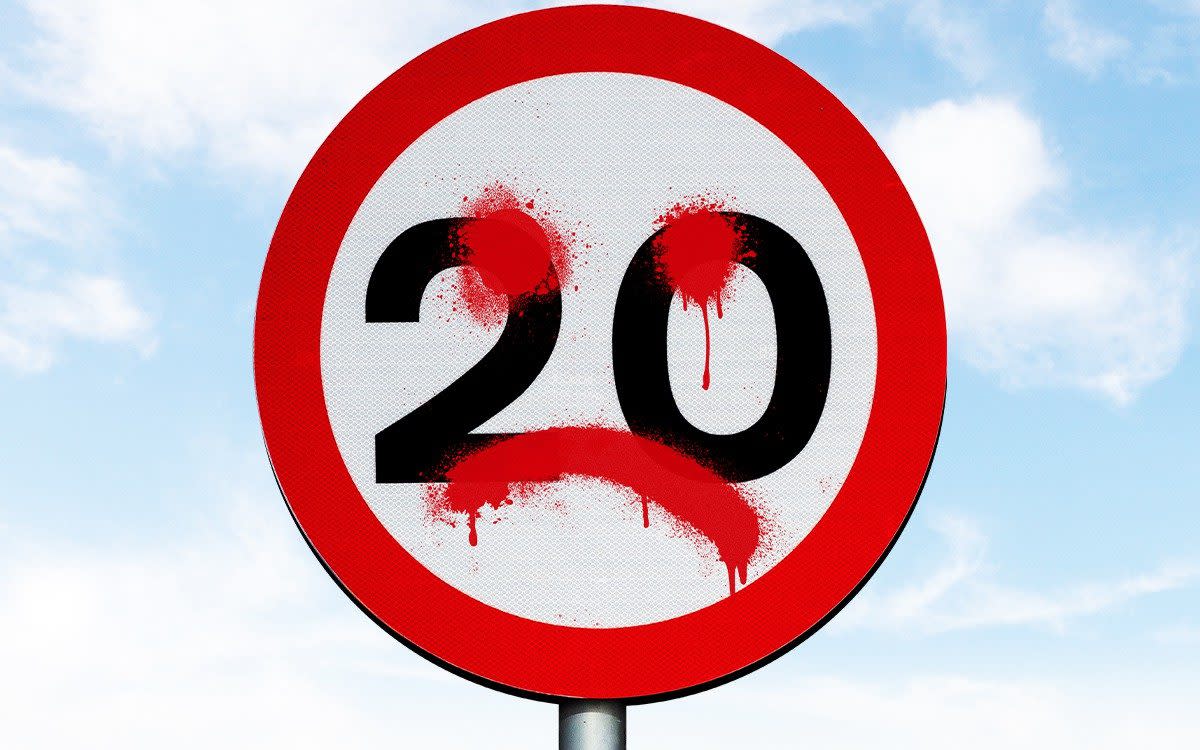Rise in 20mph limits blamed after record number of speeding offences

The mounting use of 20mph speed limits has led to a record number of drivers being convicted for speeding.
More than 236,000 motorists were prosecuted and convicted in court for speeding offences in England and Wales last year, a 16 per cent increase on the total of 203,545 in 2021.
It is the highest number of drivers convicted for speeding since 2014 when records began, according to data from the Ministry of Justice (MoJ).
Motoring organisations blamed the rise in 20mph zones and variable speed limits for catching out and penalising motorists.
A campaign group, 20mph Places, estimates there are now 28 million people – one in three of the population – who live in districts where local councils have set that lower speed limit for areas where people “live, work or play.”
Wales has already legislated for 20mph to become the national speed limit from September 17 this year while Scotland has committed to making 20mph the norm across all councils by 2025.
There are 120 UK councils – more than a third of the total – that have introduced 20mph zones. Transport for London is set to have lower speed limits on more than a third of all of its roads by next year, dropping from 30mph to 20mph or 40mph to 30mph on 137 miles of its 367 mile network.
Edmund King, the president of the AA, said: “If you look at our towns and cities and motorways, then 10 or 20 years ago, you knew the speed limit was 30mph in towns and cities and 70mph on motorways.
“That was pretty consistent and people learned that when learning to drive. Now, driving into many cities, the speed limit jumps up and down considerably from 30mph to 40mph to 20mph to 30mph to 40mph.
“Likewise on the motorways as well. You have got not only more average speed cameras but you have more variable speeds. With smart motorways, you have more overhead gantries and when traffic gets busier the speeds drop.
“The lesson to drivers is that you have to concentrate a lot more on the signs. It varies so much that that has led to an increase, rather than there being more boy racers out there.”
‘Artificially, ridiculously low’
Nick Freeman, the lawyer nicknamed Mr Loophole, who has specialised in defence of traffic and speeding cases, said it was “literally impossible” to stay within the 20mph limit, given even idling cars on an incline could easily hit that speed.
“I hit the Edgware Road and my car would not go 20mph. I am being serious. I am driving with no foot on the accelerator. When the speed limit is artificially, ridiculously low, it is literally impossible to comply with,” he said.
“So many people are getting done at 24mph or 25mph. It is just wrong. It is punitive for motorists. It is too low. It needs to be more sensible. It should be increased to 25mph and only 20mph at school pick-up and drop-off times.”
The MoJ figures were analysed by Churchill Motor Insurance who found the biggest increase was in Nottinghamshire, a city with recent 20mph zones: offences had risen by 131 per cent, from 4,089 in 2021 to 9,444 in 2022.
Gloucestershire’s numbers had doubled to 2,941; Leicestershire was up 92 per cent to 4,855; Derbyshire had risen by 86 per cent and Avon and Somerset by 61 per cent.
Craig Mackinlay, the Conservative chair of the All-Party Parliamentary Group for Fair Fuel UK, said the “draconian” enforcement measures were a further attack on drivers.
“Speeding can never be condoned but these new penalties for bicycle-type speeds are surely an over the top response. Careful drivers, often compliant across years of care-free motoring, are made to feel like criminals with relentless pursuit by police forces which is doing little to foster good relations,” he said.

 Yahoo News
Yahoo News 
